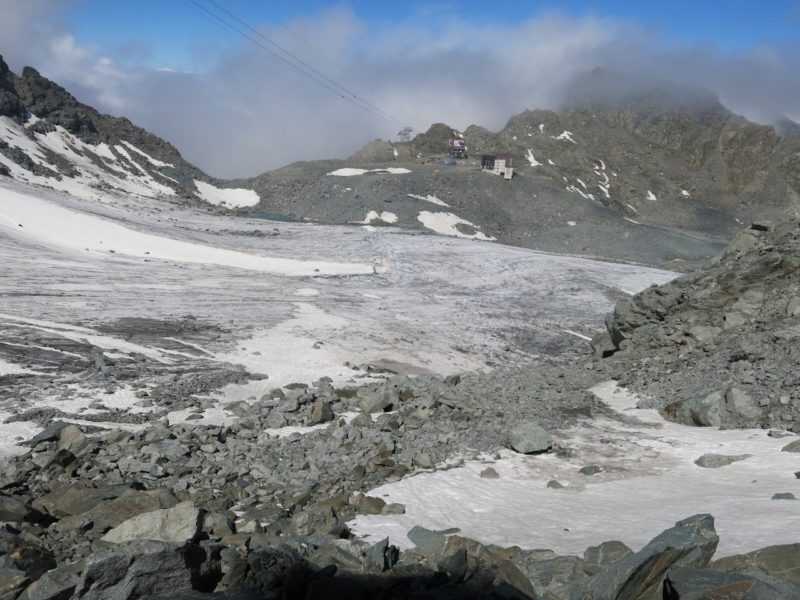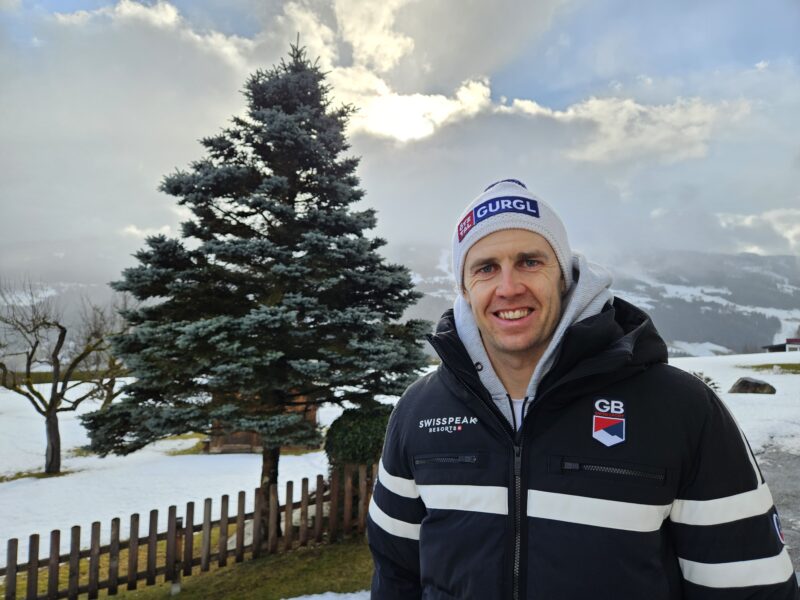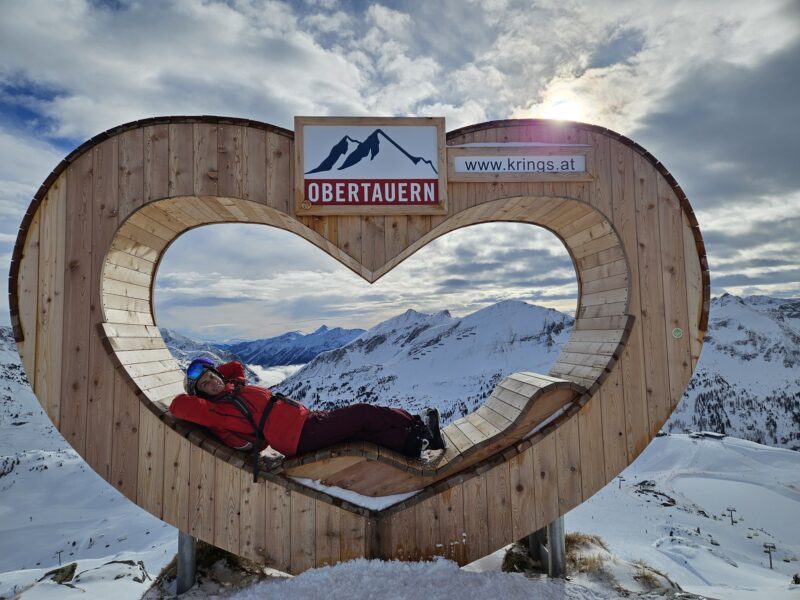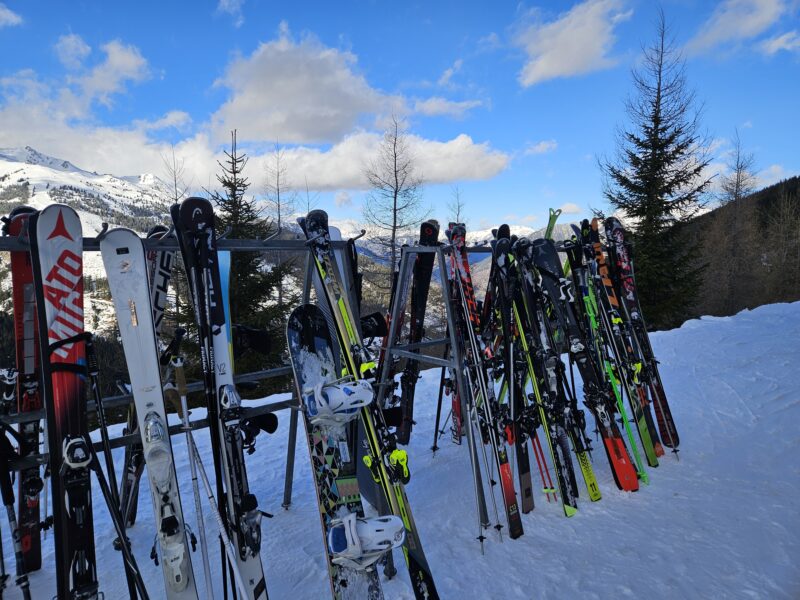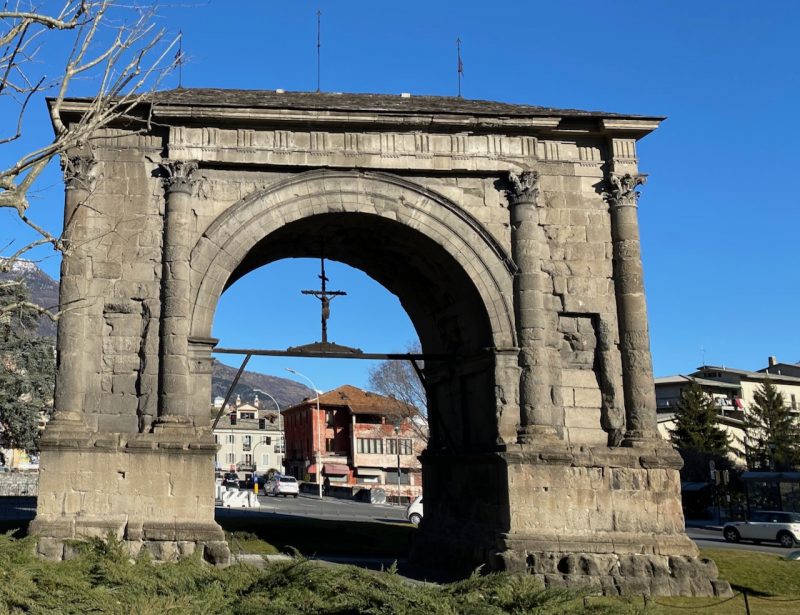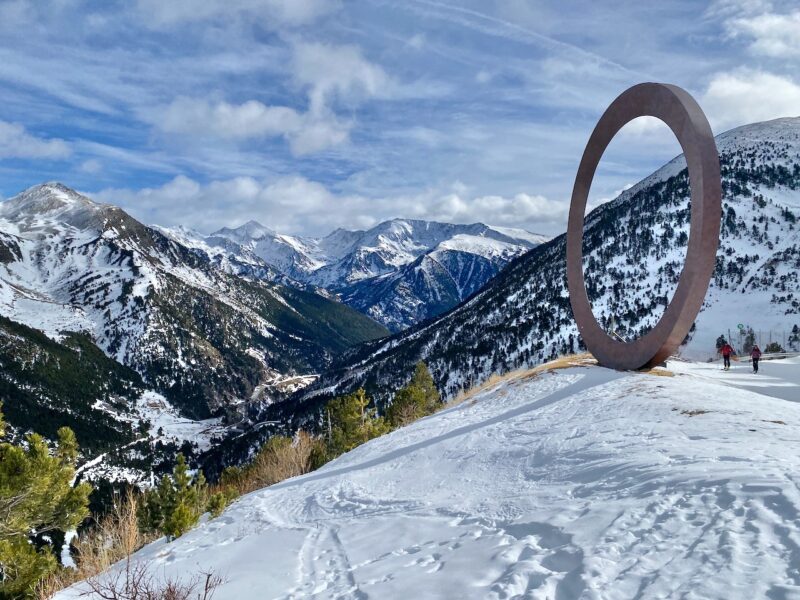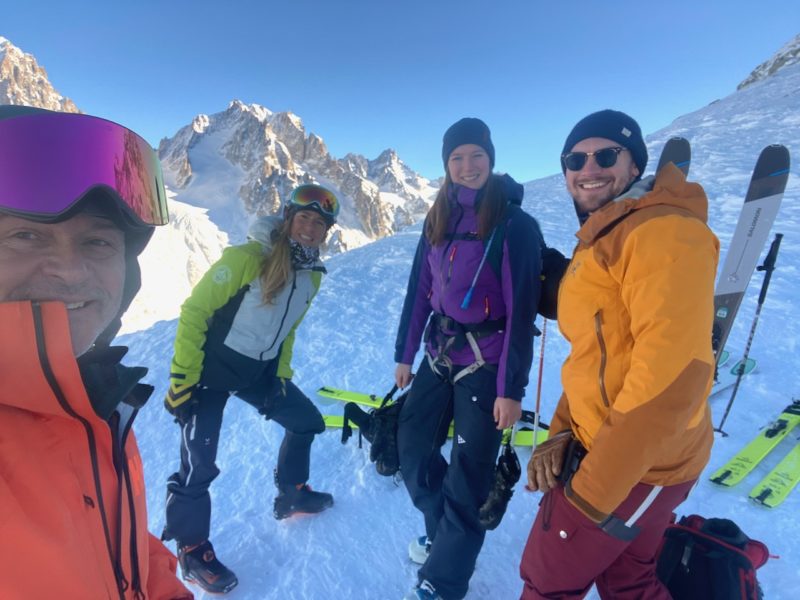Fresh US Avalanche Warnings as Pro Snowboarder Becomes Latest Victim
4th February 2021
Last modified on May 20th, 2021
Heavy storms are leaving more snow on a very unstable and weak snowpack. It has been a record season for avalanche fatalities in the US with 26 deaths. Conditions remain extremely dangerous across large parts of North America.
Updated, Friday 19th February
The latest fatality is professional snowboarder, Michael McKelvey, who died near Jackson Hole in Wyoming.
He was a member of the resort’s Park and Pipe crew.
He was with a group of friends who had built a jump.
“They built a big jump that landed on the face of a steep ravine,” said a statement from the rescue authorities.
“A five foot slide broke loose and buried him at the bottom.”
His friends rushed down the north facing slope and started to dig as first responders arrived.
He was buried under 3-4m of snow the sheriff’s office said.
The 31-year old was dug out but pronounced dead in hospital.
View this post on Instagram
His friend and snowboard legend, Travis Rice, has paid tribute.
“Mike McKelvey, a youthful spirit and old soul, left a lasting impression on most everyone who spent any time with him.
“Such a talented and passionate person who lived life to the fullest!
“We were lucky to have him on our Natural Selection team as his stoke helped build a vast majority of the venue over the past several years!
“A problem solver, creative thinker and pro level ripper. Snowboarding was a huge part of his life and he embodied what it really means to be a full spectrum rider.”
An avalanche forecaster for the Bridger-Teton National Forest Avalanche Center, Bob Comey, said the snowpack in the area is unstable and will be for some time.
“The snowpack is obviously very scary,” Comey said.
“Steep banks are dangerous right now. People really need to give this instability some respect and stay off steep slopes for a while.”
Updated, Wednesday 17th February
“Deadly avalanches are likely in the Utah backcountry over the next few days,” said the Utah Avalanche Center.
“Routes you have used successfully for years may not be so safe now, and everyone should reassess travel routes and take extraordinary precautions.”
Avalanche risk is at Level 4 but may rise to its highest, Level 5, in some areas as the snow falls and winds pick up.
There are avalanche warnings in Colorado and Montana.
A backcountry skier was seriously injured after being caught in an avalanche in Beehive Basin in Montana.
Two other skiers were involved and they did not sustain any injuries and were able to contact the emergency services.
In Jackson Hole in Wyoming a 27-year old snowboarder was found dead in a tree well.
A tree well is a depression that forms at the base of a tree when its branches keep snow from consolidating.
Many people who die from these accidents fall headfirst and are unbale to dig themselves out.
His friends reported the man missing at the end of the day after they became separated.
Rescuers were unable to find him that evening and called off the search as darkness fell.
His body was located the next day.
“We are saddened to report this fatality, and the staff at Jackson Hole Mountain Resort join me in expressing our deepest sympathies to the family and friends of the victims,” said resort President, Mary Kate Buckley.
There is an average of 4 deaths per season in the US in snow immersion suffocation incidents.
Updated, Monday 15th February
A snowboarder riding on their own near Loveland in Colorado died on Sunday, 14th February.
After an avalanche was reported the authorities went to check and saw an inflated airbag in among the avalanche debris.
It was in an area known as Pat’s Knob and the snowboarder was found buried beneath the snow.
In a separate incident on Sunday a snowmobiler was killed near Rollins Pass.
Both accidents happened on east facing slopes.
It brings the death toll in Colorado to 10, the highest since 2012/13, and it is only mid-February.
Across the USA the total is now 24 – the highest at this time of the season since records began over 100 years ago.
We have detailed the other accidents and why it is so dangerous further down this article, so do read on for the reasons.
Last week the governor of Colorado, Jared Polis, issued a warning of “extremely dangerous” avalanche conditions in the backcountry ahead of President’s Day weekend.
The avalanche risk is extremely high this year due to “exceptionally weak” snowpack.
In Vail a snowboarder had a narrow escape when he was completely buried by an avalanche in the East Vail area.
Reports from the Colorado Avalanche Information Centre say the snowboarder was able to make an air pocket in front of his face as the snow came to rest.
He also was able to put an avalung into his mouth that provided him with oxygen.
The avalung is a filtration device that draws air directly from the snowpack and allows the user to breathe.
His riding partner found him after a 15-minute search using an avalanche transceiver and dug him free.
Further north in Canada there have been two deaths in Whistler.
On Saturday a slide at Brandywine bowl caught several people.
They were able to dig themselves out but a 45-year old local man died and was found under the snow 45-minutes after the accident.
One Friday a skier was killed in an avalanche on the Blackcomb Glacier.
A day earlier, two skiers had to be rescued from a slide on Mamquam Mountain.
“Four serious Search and Rescue calls in the last 3 days, 2 of them fatal, and a multitude of serious injuries,” said a statement from the rescue authorities.
“The calls speak for themselves…the backcountry in the Sea to Sky is not stable at the moment, it’s time to wait and postpone your touring trip here for another time.”
Investigations are underway into all the incidents.
In total this season in the USA there have been 24 fatalities.
It’s the highest number of avalanche deaths recorded at this stage in the season since the US National Avalanche Center started recording deaths 100 years ago.
An earlier fatality was a snowbiker who was buried in Kittas County about an hour from Seattle in the state of Washington.
51-year old Steve Houle was a Washington state trooper who had been with the service for 28-years.
He was with a friend who was also buried, but was able to dig himself out and alert the rescue services.
A snow bike is similar to a snowmobile, but narrower.
“On behalf of the Sheriff’s Office, I would like to extend our deepest condolences to Trooper Houle’s family, friends and the Washington State Patrol,” said County Sheriff, Clayton Myers in a statement.
“This is a tragic accident and will be felt hard in our close-knit law enforcement community.”
Last weekend four people die in Utah.
Four others survived.
Two groups of skiers, one of five and the other of three, were skiing on Saturday in the mountains to the east of Salt Lake City.
They ranged in age from 23 to 48 years old
At around 11 in the morning an avalanche was triggered.
All of them were wearing avalanche transceivers.
Those who survived hunted for those buried.
“This is a terrible tragedy, and our hearts go out to the victims and families involved,” said the Utah Governor, Spencer Cox.
He thanked “first responders and others who engaged in this rescue and recovery effort” and urged caution in the wake of the deaths.
“With avalanche danger high right now, please exercise extreme caution,” he said.
There were 27 other reported avalanches reported on Saturday, though no skiers or snowboarders were caught.
The fatal avalanche happened at an altitude of 3,000m near Wilson Glade in Millcreek Canyon.
It was 100m long and 1m deep.
The Utah Avalanche Center called the avalanche “significant” and urged caution in the backcountry.
“We are overwhelmed with sadness to report four skiers killed today in an avalanche near Wilson Peak in upper Mill Creek Canyon,” said the Utah Avalanche Centre.
“High Danger. Large natural avalanches overnight. Dangerous avalanche conditions. Keep it low angle,” it added.
“We are heartbroken over the tragic news of four fatalities as the result of an avalanche in the Millcreek Canyon area this afternoon,” said the Salt Lake County Mayor Jenny Wilson.
“We deeply mourn the loss of life due to this devastating incident.”
The four who have died have been named as 29-year old Sarah Moughamian, Louis Holian, 26, Stephanie Hopkins, 26, and Thomas Steinbrecher, 23.
In total 22 people have been killed in avalanches in the USA so far in the 2020-21 ski season.
So, why are conditions so dangerous?
Primarily it is because there is a weak layer near the base of the snowpack.
Snowfall was relatively low in November and December compared to previous years and that the early snowfall didn’t bond together well.
That weak layer of snowfall is making up the base of the snowpack across many of the ski states in the western USA.
Now all the new snow is sitting on top of that weak base.
2-10-2021: We’ve issued an Avalanche Watch for very dangerous avalanche conditions beginning Friday and lasting through the weekend.
Here is a stability test from yesterday showing unstable snow conditions. A slab of wind drifted snow sitting on very weak faceted snow. East,7600′ pic.twitter.com/hIbFLhvBey— UAC Logan (@UAClogan) February 11, 2021
Several have had lucky escapes.
View this post on Instagram
The bodies of three backcountry skiers who have been missing since Monday in Colorado have been located and dug out.
The accident happened in an area known as ‘The Nose’ between the towns of Silverton and Ophir, to the south of Telluride.
The avalanche risk at the time was ‘considerable’ at Level 3.
They were part of a group of seven.
Four of the skiers were buried in the avalanche.
The other three were able to rescue one skier, who had minor injuries, and call the emergency services.
The three bodies have now been located and dug out.
The skiers were wearing avalanche transceivers which meant they could be located.
The victims were buried under 6m of snow and avalanche debris.
The weather remains too dangerous for a helicopter to recover them.
The three men all served as government officials in Eagle County, Colorado.
They have been named as Seth Bossung, Andy Jessen and Adam Palmer.
The families wanted their names released so people could “openly acknowledge their deaths and grieve together.”
In the other accident in Colorado a skier died in an avalanche in East Vail on Thursday.
Rescuers were able to dig the skier out and perform CPR but the person died of their injuries.
The accident happened in a popular backcountry zone easily accessed from Vail ski area – Abraham’s Bowl, which is also known as Marvin’s.
The avalanche risk was Level 4 at the time.
In Alaska three hikers were caught up in a slide in the Bear Mountain area. Their bodies were have been found according to a report from the Alaska State Troopers.
The authorities said the hikers were not wearing avalanche transceivers and are advising all people to avoid the area due to the risk of further avalanches.
Two backcountry skiers were caught in an avalanche in Northern California and one of them died.
The two men were caught in the avalanche Wednesday in a remote area near Etna Summit.
Ben Koerber, 37, and 35-year-old Brook Golling, 35, both from Oregon were hit by an avalanche and buried under the snow.
Koerber dug himself out and then dug out his companion who was under 2m of snow.
He tried to revive Golling, but to no avail.
He then returned to their car and drove until he was able to get a phone signal.
A search and rescue team had to postpone recovery efforts until Thursday when they recovered Golling’s body.
In New Hampshire the body of a skier who went missing in Tuesday has been found under more than 4m of snow on a trail near Mount Washington.
The skier was reported missing by his friends after failing to return home and answer repeated calls.
He was found on Wednesday.
He was equipped with safety equipment and was located via his transceiver.
In Utah, in a rare move, the authorities have closed the backcountry access gates in Park City Mountain Resort until further notice after heavy snowfall and another fatality.
The message on the signs says “backcountry gates closed pending meeting between PC resort management and US Forest Service.”
The area has recently seen two fatal avalanches.
Last Saturday a local man, 57-year old Kurt Damschroder, was killed.
He was one of two skiers who triggered the avalanche in an area known as Square Top outside of resort boundaries near the Park City Mountain Canyons Village resort.
“Our hearts and prayers are with Kurt’s girlfriend and family,” said the Summit County Sheriff, Justin Martinez.
The second skier was able to dig him out and attempted lifesaving efforts but was forced to leave because of dangerous conditions.
The sheriff’s office warned people to use “extreme caution” when entering the backcountry, check avalanche conditions at the Utah Avalanche Center and use proper equipment when skiing.
It was the second backcountry fatality within a month after 31-year-old Kevin Steuterman died in an avalanche in the same area on January 8th.
He died on a nearby run known as Dutch Draw.
The backcountry gates are rarely closed and, when they are, it is usually due to an ongoing incident or investigation in the backcountry.
“In the aftermath of recent tragedies outside of our resort boundary, we have closed the backcountry access points until further notice,” said Senior Communications Manager, Jessica Miller, to local news network KPCW.
The USA has seen some large snow falls.
In California Mammoth Mountain saw up to 2m of snow in a recent storm that closed much of the resort and the access roads.
It has been snowing heavily further north in Canada.
Whistler in British Columbia now has a base of 2.2m.
A report on the Avalanche Canada website says one skier has been seriously hurt in an avalanche on Vancouver Island in British Columbia.
The report says it happened Sunday on Mount Cameron.
Two skiers were caught and carried 200m.
One was able to stay on the surface and dug out the other who was 1.5m under the snow.
The person’s condition is not known.
Ski patrollers in Cypress Mountain near Vancouver rescued a snowboarder on Tuesday night.
They have issued a warning to people ducking under ropes.
“Stop ducking the ropes on the Sky Chair on Cypress,” a post on North Shore Rescue’s Facebook urged the public Wednesday .
“This is our second rescue in less than two weeks in this area. The last rescue the subject was badly injured and had life-altering injuries,” the statement continued.
“If you duck ropes you are going into uncontrolled avalanche terrain. Beyond the ropes there are cliffs, gullies, tree wells, terrain traps that can injure or kill you.”
The North Shore Rescue said January has been its busiest to date, with teams having responded to 15 calls for help.
One of them ended with the death of 22-year-old snowshoer.
Further inland in Canada the resorts of Lake Louise and Sunshine Village around Banff in Alberta report great skiing conditions, though caution is urged in the backcountry.
Dangerous avalanche conditions have developed in Alberta and British Columbia mountain ranges according to the authorities.
In Alberta avalanche warnings are high in areas that include Banff, Kootenay and Yoho national parks as well as Kananaskis Country, particularly in treeline and alpine zones.
The areas have seen up to 50cm of fresh snow.
Affected areas in British Columbia include Glacier National Park, North Columbia, South Columbia and the Cariboos.

